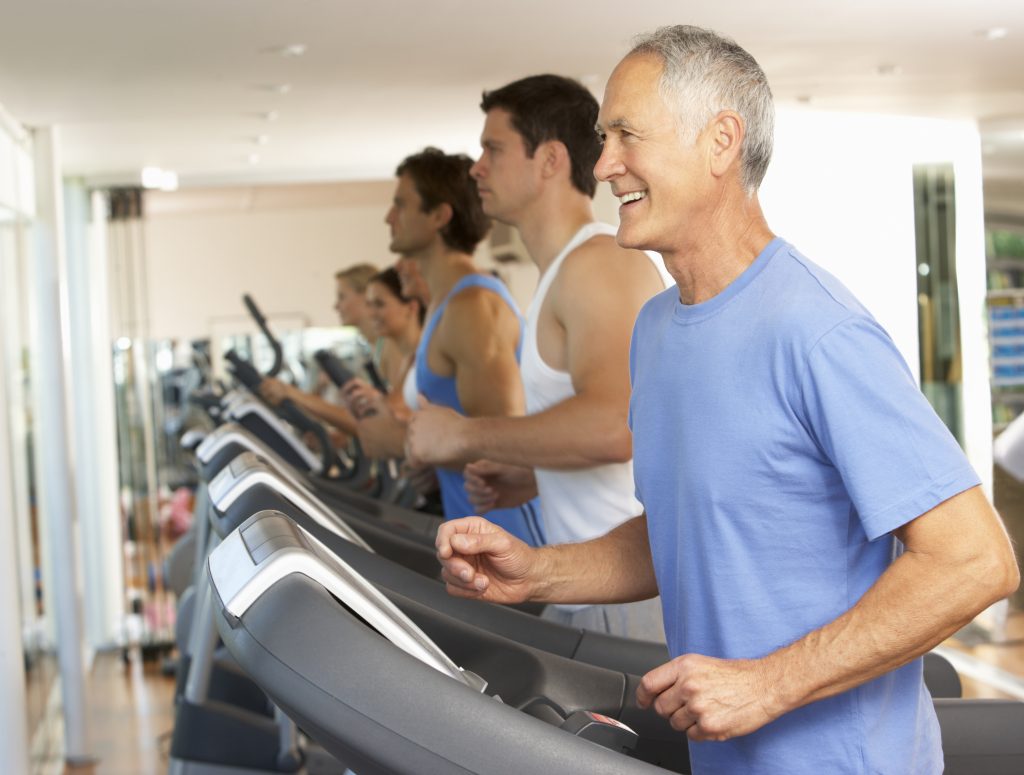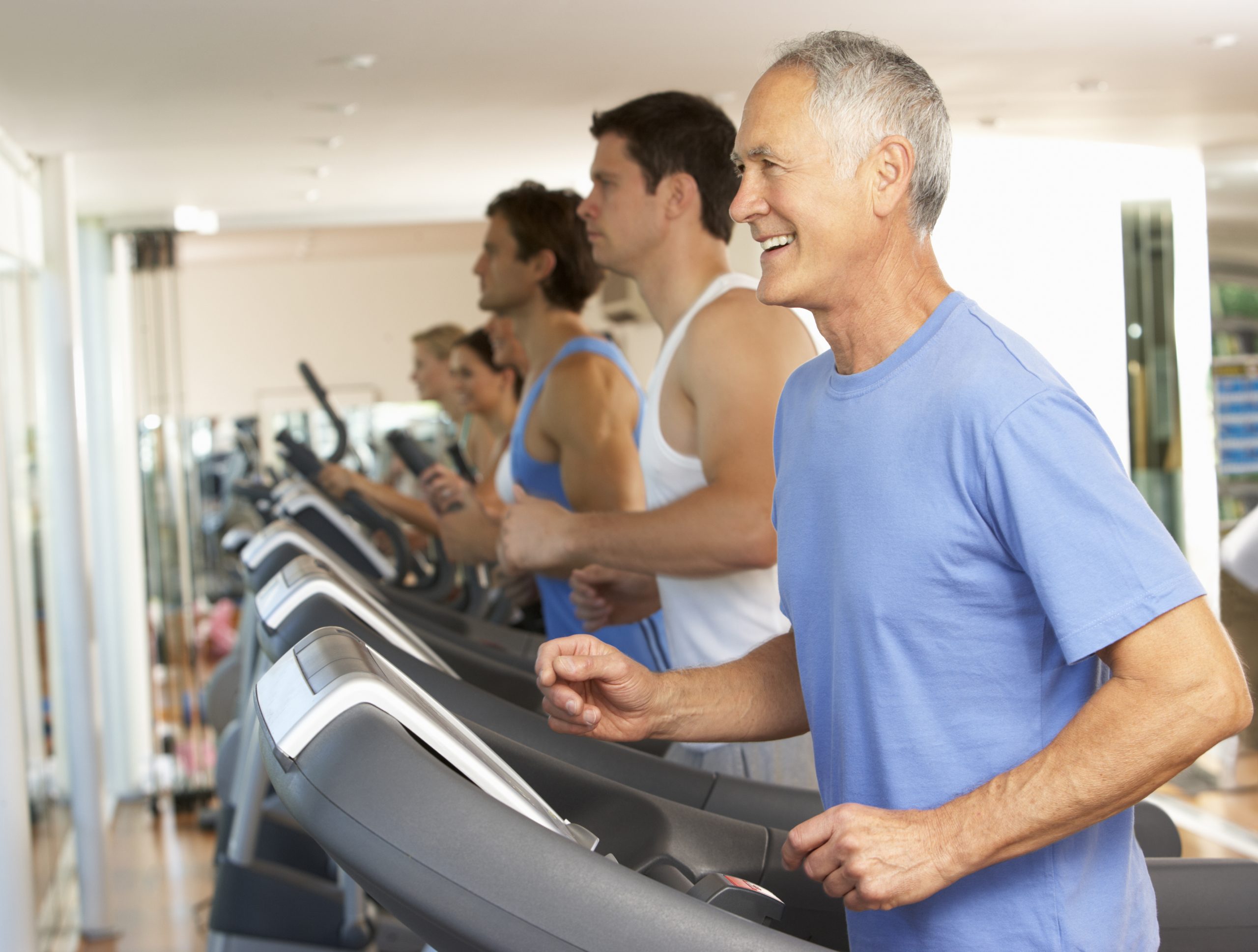From strengthening muscles and building tough bones to burning fat and supporting cardiovascular health, running has plenty of health benefits to offer. One of the best aspects about running is that you don’t need much to get into it — and you don’t have to be a certain age either.
If you’re wondering how to start running at 50 -or even older- but you’re having doubts about the possibility of such an idea, today’s guide is here to help you achieve your goal.
It doesn’t matter if the last time you remember going for a proper run was back in college or high school, you’ll soon discover that beginning your running journey is that difficult, older runner or not.
The following steps and tips will get you on the right track in no time (figuratively and literally!), so don’t hesitate to implement them for the sake of improving your lifestyle and boosting your fitness level.

Have a Full Physical Checkup
After deciding you want to become a runner, the very first thing you should do is pay a visit to your doctor or healthcare professional to have a complete physical checkup.
Discuss with them your planned training program or running routine and ask if this physical activity can negatively affect your health. Also, ask them about signs of problems you should watch out for, such as heart disease, orthopedic issues, or diabetes.
Getting a complete medical checkup is essential for older athletes as it provides you -and your doctor- with important information regarding your health including blood pressure, weight, heart rate, BMI, cholesterol, and more.
With these values in the picture, you can better tailor your running plan right from the start. They’ll also make it easier for you to monitor your progress over time.
Form a Suitable Running Plan
If you’re a beginner runner, you may be under the impression that you’ll just jump right onto the road once your mind is made up. However, this isn’t a good idea as preparedness is key to both safety and continuity.
This means you need to first put together a running plan that’s in line with your goal, whether it’s losing weight or training for a marathon. The most important thing to consider when formulating a training program is that it should initially match your current fitness level.
Kicking off your running journey with a few days of walking sessions is a great way for any individual to start training. However, older runners can especially benefit from walking as it provides gentle basic conditioning needed for the more physically-demanding exercise.
You see, walking uses pretty much the same bones, joints, muscles, tendons, and ligaments as running. So the better conditioned you are, the easier you can gradually transition into running by introducing short intervals of running into your walking sessions.
As an older runner, you’re likely to take a longer period to warm up, which is all the more reason to not skip this step.
Invest in the Proper Equipment
Once you have a plan in motion, it’s time to invest in proper running equipment to maximize the efficiency of your performance. So, hit your local running store and ask an expert down there to help you find the right type and size of running shoes.
You’ll probably have to put on a few pairs and try jogging/running in them. You should choose what feels most comfortable.
Get a couple of good-quality running socks, then look into buying some running outfits as well.
Running pants or shorts and running t-shirts or long-sleeved shorts are good options depending on the weather. Ladies should add a quality sports bra to the list.

Get Through Your First Week of Running
When you’re ready to start running, you should be aware of two things:
- The first week is the most important.
- The first week is the hardest.
As such, getting through your first week of running successfully can be the difference between keeping up the activity or giving it up. Although you’ll be easing your body into it, chances are you’ll still experience some soreness.
To help you reduce the pain and lower the risk of injury, here are a few tips to make the notorious first week of running more bearable:
- Before running, warm up your body with a quick walk for about 5 minutes. This will get your heart pumping and work up your muscles.
- Then, start jogging at a relaxed pace for 2 to 3 minutes.
- Depending on your fitness level, gradually increase the pace so you’re running at an active yet comfortable pace. Feel free to stop for a walk break if you feel too wound up after 1 minute.
- When you finish your first 1 to 3 minutes of running, bring your pace down so that you’re walking again. Keep it up for 1 to 2 minutes.
- From there, repeat the running/walking set for a maximum of 20 to 30 minutes.
- Finally, walk for a few minutes to cool down.
Each week after the first, you should face no issues adding an extra minute to your running duration while simultaneously decreasing your walk/rest period. This way, you’ll probably be able to completely eliminate the walking by the fourth or fifth week of running.
Remember Your Motivation
Keeping your motivation alive is a vital aspect of learning how to start running at 50. Every runner -regardless of their age- has a certain reason that got them into exercising regularly.
For older athletes, especially, maintaining motivation is necessary to get up and run on the days you want nothing more than to stay in bed all day. A lot of runners like to incorporate listening to upbeat music while running, so why not try creating a motivating playlist for your runs?
Besides that, here are a few other techniques you can also try to stay motivated:
- Run along scenic trails where you can enjoy the beautiful nature as your backdrop.
- Find a running buddy to train with.
- Join a local running club.
Keep Track of Your Nutrition
It’s widely established that nutrition is a crucial factor for athletes, and it becomes even more important with age. As we grow older, our bones lose density and turn more fragile, particularly if you’re a post-menopausal woman.
To counter this, you should consume foods and drinks with a high calcium content such as milk, cheese, and yogurt. Don’t forget to inform your physician that you’ve taken up running so they know to give you periodic bone density tests.
The right types of food are going to efficiently fuel your body so you make the most out of each run. As such, your diet needs to offer a balanced variety of nutrients, including vitamins and minerals.
Don’t worry, this doesn’t dismiss your right to indulge in a bacon cheeseburger or a bowl of ice cream every now and then, but make it an exception instead of a habit. The rule should be vegetables, fruits, lean meats, and healthy fats (nuts, olive oil, and avocados).
Never Skip Stretching
This can’t be stressed enough: don’t skip stretching before each run. There may have been a time when you could go running without stretching and not end up sore later, but if you’re 50 or older, the chances of this happening are slim to none.
As we age, our bodies require stretching before intense workouts to wake up the muscles and prevent injury.
Add Strength Training
Last but not least, older runners can highly benefit from adding strength training exercises to build and support muscles for every run.
This doesn’t have to take up much of your time or even be too complicated, just include a couple of these exercises -like squats or wall push-ups- in your training program.

Wrap Up
There you have it, a full guide on how to start running at 50 along with tips and techniques to help you maintain the healthy lifestyle you’re aspiring to achieve.
While it’s great to stick to your running schedule, don’t feel like you must go for a run every single day, particularly in the beginning. The last thing you want to do is burn out your body, so be sure to allow yourself enough time to get used to the new physical stress
On the days you skip running, you can make up for it with lower intensity exercises such as cycling, yoga, swimming, or some time on an elliptical machine.

